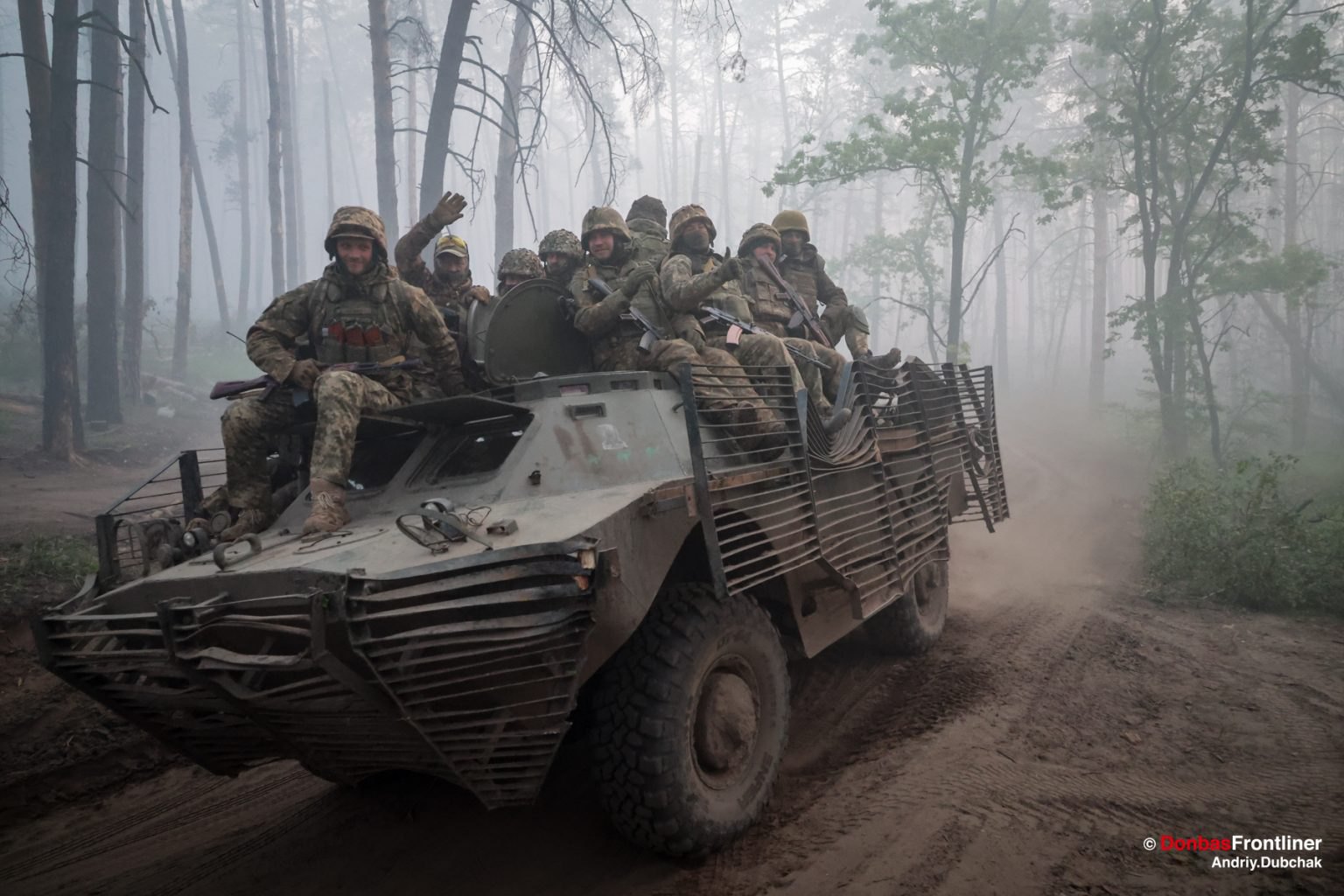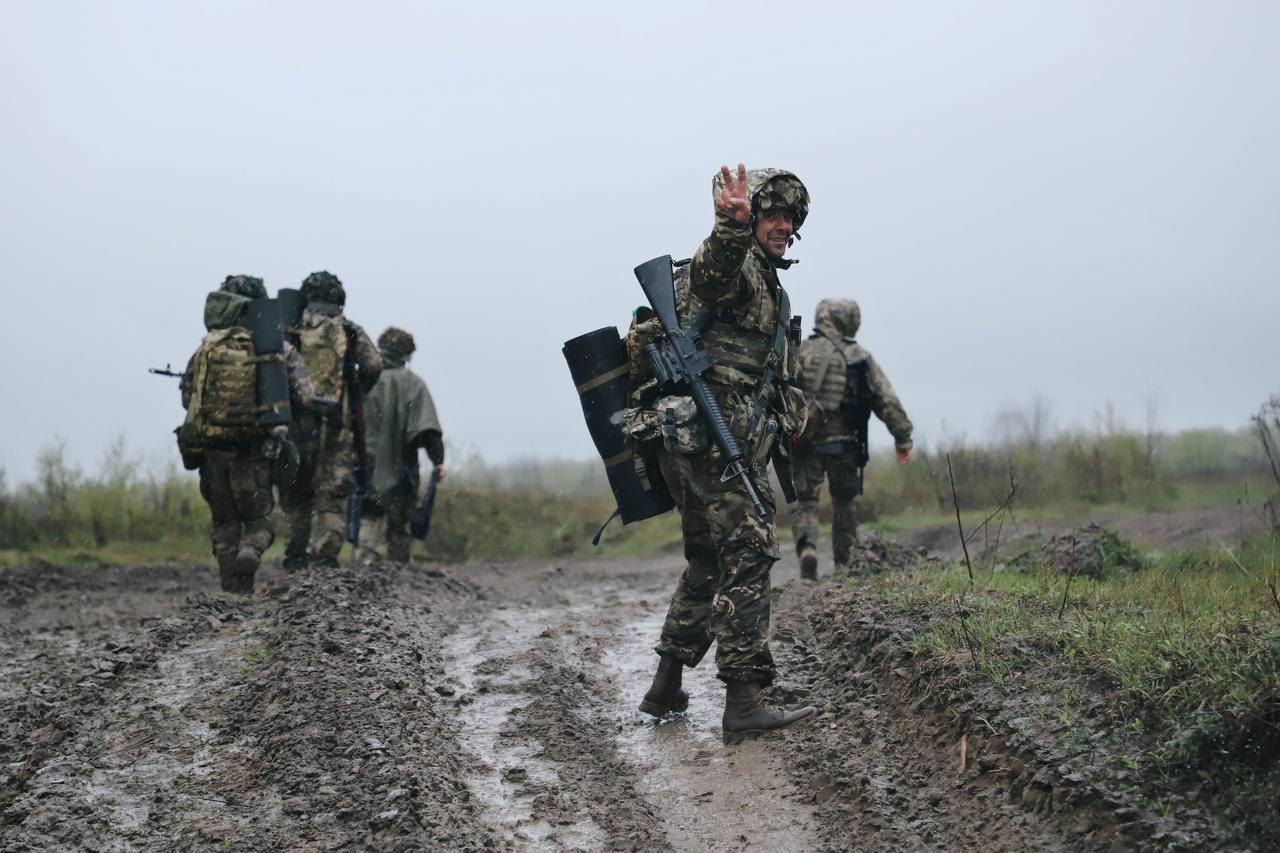What is the general dynamics of the situation?
The enemy has been retrieving a substantial amount of Soviet-era artillery from storage, including D-30s, D-20s, and even some older uncommon pieces. These towed artillery systems are not self-propelled, which makes them vulnerable to changing positions and subsequent attacks. Shrapnel from explosions targets these unarmored guns, rendering them inoperative.
⚡️ На Запорізькому напрямку, 47-ма окрема артилерійська бригада разом з операторами дрону 108-ї бригади ТрО виявили та знищили три російські гаубиці Д-30 ‼️ та польвий склад боєприпасів поблизу окупованого міста Пологи
— 🇺🇦 Мисягiн 🇺🇦 (@2uwmp) June 22, 2023
47.46292, 36.12278https://t.co/HbC3JeW20Q pic.twitter.com/AFpjavVNDX
In our designated area of interest for the summer campaign, we have stockpiled ammunition, expanded our operational capabilities, secured a sufficient supply of high-precision munitions, and deployed additional counter-battery radars.
Several specialized drone operator groups have been deployed, including various Terra, Shershni, and Luftwaffe in addition to Ptakhy Madyara (Magyar Birds). These groups maintain connections with bloggers, volunteer organizations, and experienced crews equipped with advanced technology and extensive flight experience.
Auxiliary units participating in the offensive have also been equipped with drones. It is not uncommon to observe two dozen drones operating simultaneously within a brigade's area of responsibility.
They have been fulfilling not only the requests of their own units but also independently conducting targeted operations, providing artillery adjustments, performing airstrikes, and targeting the tactical rear with FPV.
Towed howitzers are easier to locate and neutralize than self-propelled artillery systems.
To enhance our capabilities in counter-battery warfare, we have received a significant quantity of M-30A1 missiles with tungsten carbide warheads, allowing us to effectively employ high-precision weaponry.

Because the best battery hunter is the senior manager's rocket battery.
With the drop in water levels, activities intensified on the left bank. Small groups, using boats, are disrupting enemy lines, establishing defensive perimeters in summer houses and in green areas. They are being supplied with speedboats.
Russian batteries are compelled to become active and fulfill the demands of their units, even though they may wish to avoid detection by specialized radar and drone operators.
We are located across the river, and the coast is effectively sterile for us. This allows us to comfortably position artillery and air defence systems without fear of enemy small groups, saboteurs, or underground forces.
The Russians are unsure about the security of their own shoreline, with kilometers of flooded Kherson dachas, plantations, floodplains, and old waterways hiding potential surprises.
Drones are frequently launched from there to conduct reconnaissance and set up artillery positions.
The objective of the patrol battles is to push the enemy's line of observation and concealed positions closer to their main defence line, make it abandon the dugouts constructed for shifts to rest and heavy infantry positions in the gray zone.
The goal is to target the main defence line by striking at enemy equipment, water trucks (wells have been contaminated with animal carcasses and machine oil by idiots), supply lines, and company command centres. Additionally, valuable discoveries can be made deeper into enemy territory, such as Pion self-propelled cannons, electronic warfare (EW) systems, communication vehicles, and towed howitzers.
Знищено російський «Піон» 🔥🔥🔥https://t.co/7afzWKQabH pic.twitter.com/pYUXk3uHXA
— Оперативний ЗСУ (@operativno_ZSU) June 27, 2023
As the drones from the gray zone venture farther, pushed-back enemy patrols become less of an obstacle, there are no EW riflemen hiding under bushes, and large jamming systems are pushed farther away.
Do you get the concept?
It's a combination of facts that explains the increased effectiveness of strikes against enemy artillery. However, it's a complex web of interconnected measures. There are many hidden interdependencies at play.
Naturally, drones are lost over time (their average lifespan on the front line is not particularly long), individuals may falter, and high-precision munitions are exhausted. There is no perpetual "offensive momentum."
Nevertheless, for now, things are objectively progressing well. We have destroyed the Zhitel electronic warfare system, the aforementioned Zemledeliye mine-laying system, several brigades' towed artillery within a month, and the command and control structure (minus the 35th brigade's chief of staff and a colonel from Voronezh) has been repeatedly hit.
Унікальне відео💪
— Повернись живим (@BackAndAlive) June 22, 2023
Бійці 128-ої ОГШБр, якій регулярно допомагає Фонд, знайшли та знищили бойову машину російської інженерної системи дистанційного мінування «Земледелие».
Вогонь артилерії коригувала «Лелека-100».
Дякуємо, що підтримуєте військо👉 https://t.co/CUZtxsJCUn pic.twitter.com/epbhIYBlAG
What is happening on the ground?
It should be noted that despite the intensity, these battles primarily involve company-sized groups, occasionally at the battalion level.
One such battle for positions occurred near the canal of the 3rd Separate Assauilt Brigade in the strip near Klishchiyivka.
The enemy was caught off guard, resulting in numerous prisoners, captured strongholds, and a significant reduction in the garrison's strength. The enemy company either suffered casualties, injuries, or was taken captive.
The bridgehead beyond the canal has been secured, and now the front extends from before its bend near Klishchiyivka. The enemy has been pushed back to Kurdyumivka, with the 28th Brigade reaching the canal opposite the village. Raids within the town itself persist, targeting the enemy's network of observation posts and patrols, resulting in their capture and elimination.
Strategically, the town holds importance for the enemy as a springboard for an offensive on Chasiv Yar and Kostyantynivka. It is also a symbol of hard-fought success over several months, possibly the only one they have achieved during the winter campaign. Naturally, the enemy is reluctant to lose it within a matter of weeks if they have held it for months.
Consequently, they are constrained by defending the town, which is challenging given the dominant heights behind us, especially as we apply pressure on the flanks.
The enemy's attack against the 42nd Brigade along the Kreminna line was repelled through fierce fighting, with support from neighboring units such as the 95th, the Territorial Defence and the National Guard. However, not without losses, including some green areas.

Nonetheless, we have managed to prevent the diversion of additional units from our designated areas of operation, even those near Bakhmut. This serves as an excellent example of how the enemy maneuvers its forces and resources, utilizing assault infantry in forested areas and inexpensive units (prisoners) who are not spared in attempts to break through and improve their tactical situation.
On the left bank of the Dnipro, small groups of Ukraine's Defence Forces have been deployed. These groups are tasked with establishing an extensive network of observation posts and mortar positions in the numerous villages where Kherson residents used to vacation, former canneries, and departmental recreational facilities.
Furthermore, a blessing in disguise, the Dnipro River is no longer a kilometer wide, allowing for steady progress in the bridgehead near Antonivskyy Bridge and the plantations near Hola Prystan.
The enemy has been dispatching reinforcements to the region from this line and Enerhodar. These units are not the best, having been affected significantly in terms of ammunition and living conditions due to the high water levels.
That's why conducting raids is advantageous: they serve as anti-landing operations and protect the river from being forced. Additionally, deploying pontoons through the shallow old channel diverts valuable enemy resources.
The enemy garrison in Rivnopil was ultimately defeated at the Vremivka ridge. Although there is a commanding height to the south, the village itself is no longer in lowlands. The hills provide us with an advantage in this sector. We managed to outflank the enemy, breach their minefields, and force them to retreat.
Most likely, the enemy will exert pressure along the Urozhayne-Staromayorske line from the hollow, head-on and across the river.
Once again, everything that worked in our favour during the defensive phase is now working in favour of the Russians.
This includes the inability of both parties' aircraft to fly beyond the forward line of own troops (FLOT).
Furthermore, the enemy's robust anti-aircraft missile units have forced them to divert resources for their protection and supply.
There is also a tendency to engage in battles with armoured vehicles, deploying on-foot company-sized units of around 30 to 40 fighters.
The balance of forces and resources is approximately equal.
Engineering preparedness is another factor. The front line has not shifted in the Orikhiv direction since the beginning of the war.
The enemy is consolidating its positions, employing remote mining tactics, and deploying reserves from deeper within their territory.
Although the technical superiority resulting from Western assistance is evident, we still possess a substantial amount of Soviet equipment and suffer from a tendency to overblow the personnel without sufficient time to train specialists.
The 128th Brigade achieved success on the first day of the operation, with only three casualties, if I recall correctly. This can be attributed to their continuous combat experience since 2014.

The 47th Brigade, on the other hand, lacks such experience. They have spent over a year on training grounds. However, dealing with the intricacies of anti-mine operations, such as correctly laying demining cords on the field (a 100-metre passage is not a panacea), conducting engineering reconnaissance, utilizing trawls, grapnels, special probes, and collecting anti-personnel mines with caterpillar vehicles - all of these tasks present challenges.
Certainly, relying solely on media-famous fighters and donors is insufficient for effective coordination in such conditions. Some aspects can only be learned through experiencing war firsthand, even if it means months of training.
But these are the realities of combating the enemy's fortified defences, backed by artillery support. It includes night-time helicopter attacks on demining vehicles, combined minefields, and the ability to remotely place them.
Mechanized units must pierce the enemy's line and enter the operational space. To achieve this, they need to cross the line of concealed positions in the foothills and reach the first line of defence. This has already been accomplished in three directions.
These are the types of battles where parity exists in terms of aviation, lacking well-trained mass assault infantry with combat experience. The pace of the offensive is reminiscent of the Iran-Iraq war.
However, the 47th Brigade is also making progress near Robotyn. They are clearing the plantations, and positive news is likely to follow soon.
Currently, the main work being done is invisible to the eye - it involves destroying supplies and neutralizing enemy artillery.
This work is very intense.
In the green areas, there is a war of mortars, drones, drone drops, and assaults on dugouts. This is an area where we still maintain an advantage over the enemy, although they are rapidly closing the gap in terms of drone capabilities.
The loss of artillery and attack helicopters serves as an indicator of the enemy's struggle to hold the line.
The enemy is engaged in repairing bridges across the Syvash Lake. They are using cranes to replace the broken longitudinal beam on one of the bridges. Currently, that particular bridge is offline, along with several operational units.
The war for initiative continues, and the enemy is sustaining significant losses. The Russians are running low on ammunition, and in the future, they will face difficulties in finding crews for their cannon artillery removed from storage. Expect positive developments in the days to come.







